Pre-production car first drive: Mazda MX-30 Electric EV
There’s no shortage of talking points with Mazda’s first electric car, the MX-30.
For starters, it’s Mazda’s first EV.
It’s also the first Mazda SUV to get “freestyle” doors that have the rear doors hinged at the back of the car.
And it will be the Mazda that sees the return of the iconic rotary engine, albeit as an onboard generator rather than a zingy high-revver to drive the car.

The MX-30 – which Mazda confirmed for Australia late in 2020 – also come as a regular ICE, albeit one with a mild hybrid system.
Oh, and it looks pretty cool.
Of all the EVs coming to Australia in 2021 it’s one of the most interesting.
MX-30: Show us the money
Mazda will initially offer two drivetrains in its MX-30: the M-Hybrid and the Electric.
It’s the mild hybrid model that will lead the way on pricing. Sure, it’s got an internal combustion engine and some electric driveline components, but the latter is very mild, more about assisting in the engine stop-start functionality and allowing the engine to temporarily switch off sooner.
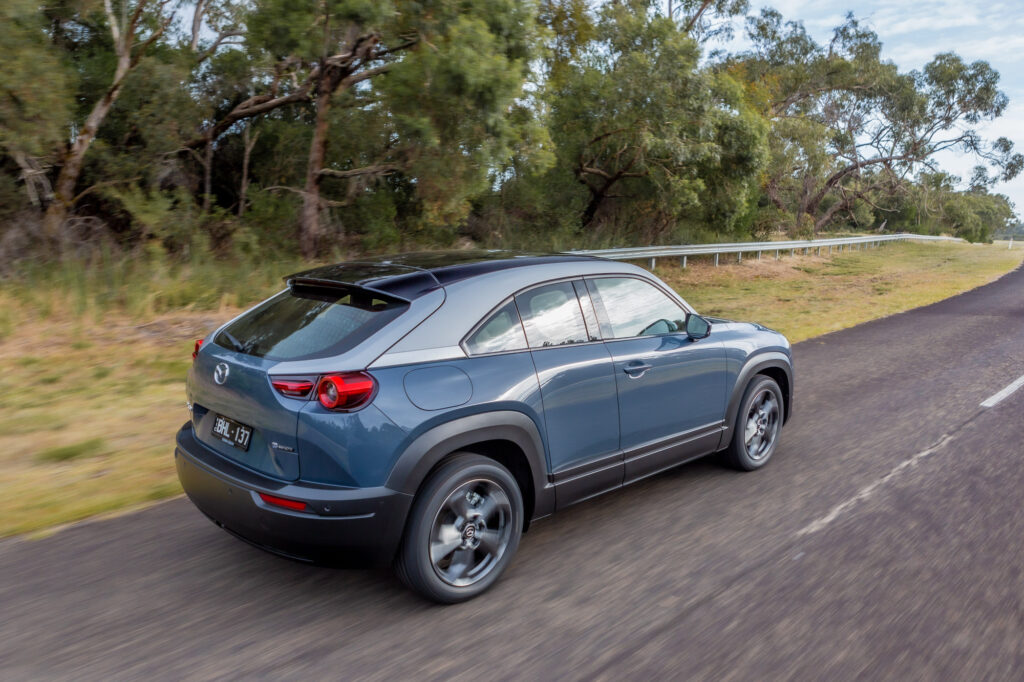
Which leaves almost all the work to the 2.0-litre four-cylinder that makes a modest 114kW and 200Nm.
And the 2.0-litre Skyactiv G engine is approaching its 10th birthday and lacks the tech of the newer Skyactiv-X engine.
We can’t yet say how much it will cost, although it’s reasonable to assume it’ll kick off somewhere in the 30-grand bracket. Expect it to be more expensive than the more conventional CX-30 but not surge past other SUVs within the Mazda stables.
The bigger question is how much the MX-30 Electric will cost.
Best guesses are it will start somewhere closer to $50,000, although that depends on where Mazda positions the car.
That would have it in the hunt with some of the more affordable EVs on the market, although still well behind the MG ZS EV.
Not that the MX-30 is selling on price alone: it’s a distinctively-styled SUV with impressive attention to detail and a focus on driving enjoyment.
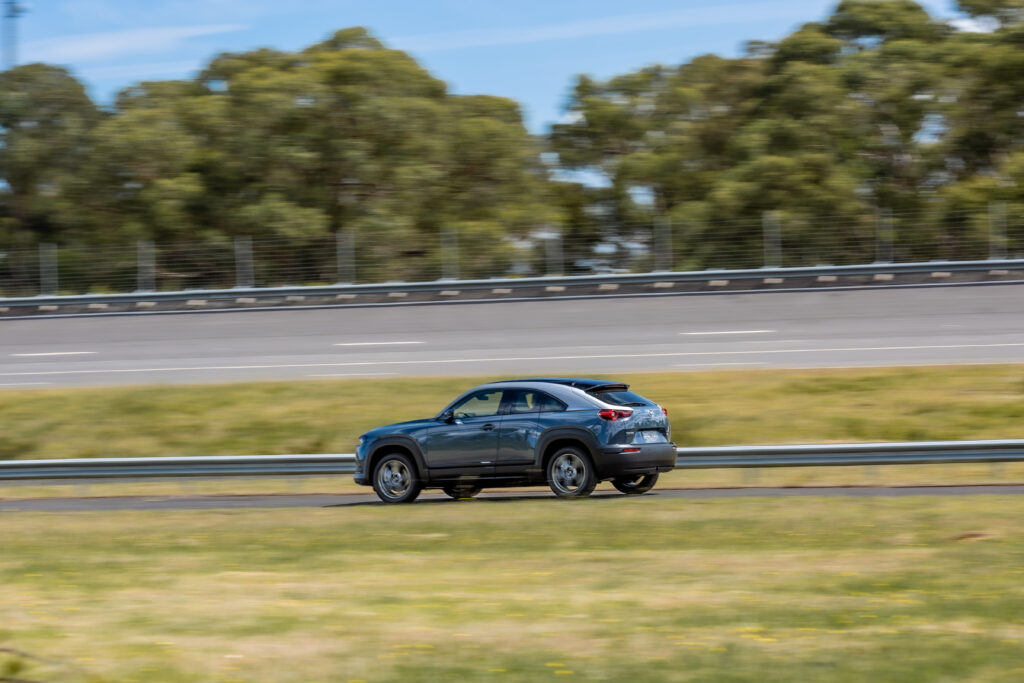
What is the MX-30 and how does it measure up?
Think of the MX-30 as a CX-30 in a sexier skin.
Mazda reserves the MX moniker for sportier or more exciting models. MX-6 and MX-5 are two of the most famous, the latter one of the world’s most loved convertibles.
Sure, the MX-30 is an SUV, but it’s one Mazda sees as being a little different and more enticing to the growing breed of city slickers.
It sits on Mazda’s common architecture that was designed for engines, fuel tanks and transmissions.
But in EV guise it replaces all those oily bits with things that carry electrons.
At 4395mm long and 1795mm wide its core dimensions are identical to the CX-30.
The pair also share the same 2655mm wheelbase, although at 1555mm high the MX-30 is 15mm taller than its CX sibling.
While there are distinct styling differences – the MX-30’s headlights are recessed deeply into a meaner-looking grille – the biggest difference is with the back doors.
Whereas the CX-30 uses conventional doors, the MX-30 has “freestyle” doors, which is marketing speak for doors that are hinged at the rear.
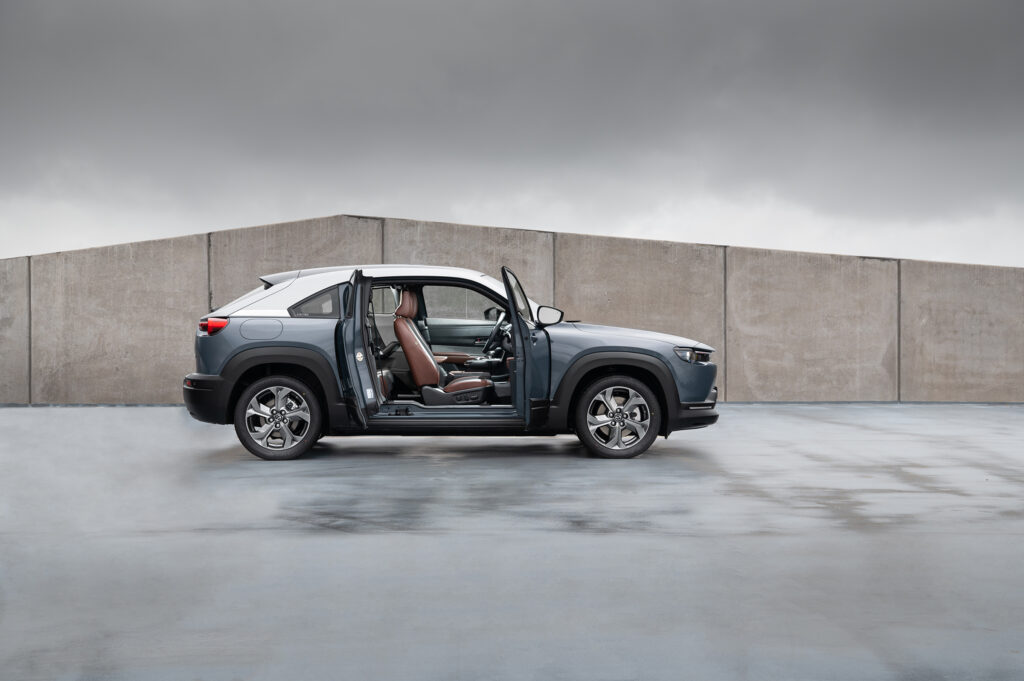
They’re similar to those used on the Mazda RX-8 sports car and, like that car, require the front doors to be open before you can open the rears.
So it’s a compact SUV far better suited to singles and couples rather than families who regularly want to access those back seats.
The MX-30 taste test
EVcentral was given an exclusive taste test of the MX-30 – and it happened at some of the most hallowed bitumen in Australia: the former Holden Proving Ground, now owned by Vietnamese newcomer VinFast.
It’s a vast network of private roads that have helped develop some of the most famous and iconic Aussie cars ever created: Monaro, Kingswood, Commodore and many more.
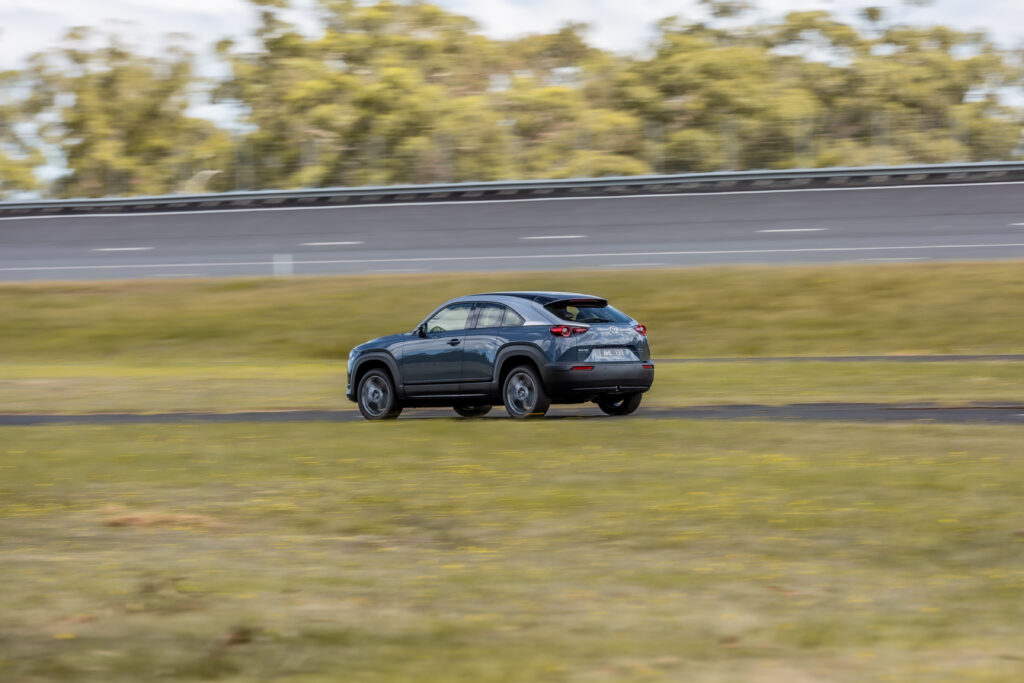
The selection of roads on the proving ground south-east of Melbourne is designed to mimic vast swathes of Australia’s rural road network, something perfectly on display around the handling loop that incorporates bumps, lumps, varying road surfaces – even tram tracks.
While not representative of everyday driving, it was the only legal way to experience a pre-production car that we weren’t allowed to drive on a public road.
Our drive was far from extensive, a total of about half an hour, much of it more representative of rural rather than suburban driving.
But it was enough to learn plenty about this crucial newcomer that bursts Mazda onto the EV scene.
Charging, range and more
Some numbers first…
The MX-30’s lithium-ion battery pack is towards the smaller end of the scale for BEVs, at 35.5kWh.
But then again this is a small(ish) SUV.
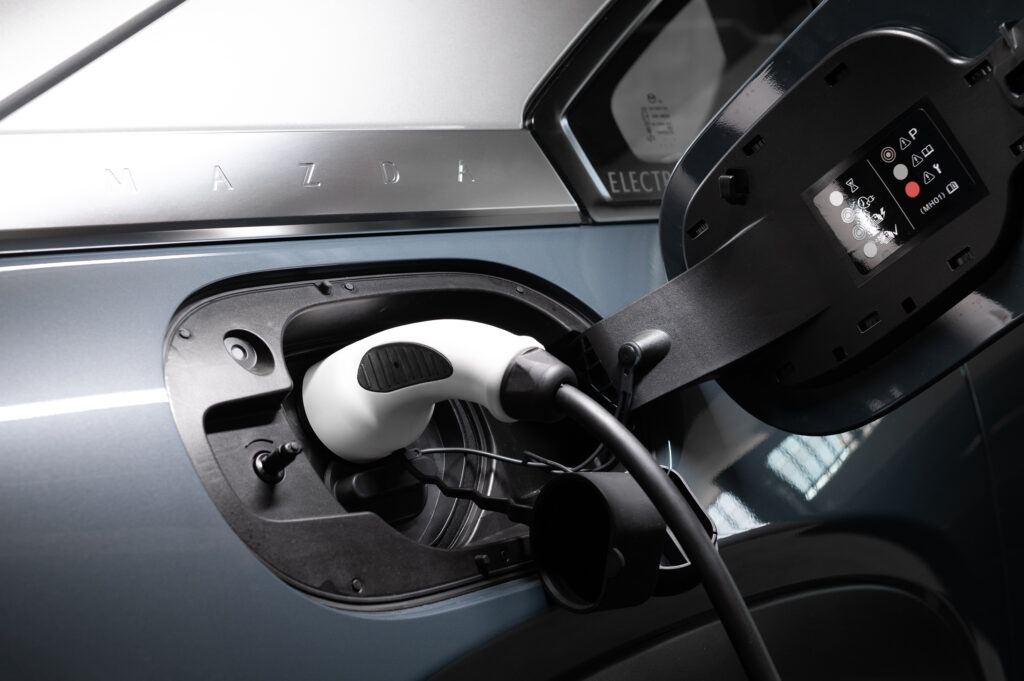
Claimed range is 224km, although the more realistic WLTP range figure is closer to 200km.
Charging can be done via 6.6kW AC or 50kW DC charging through a Type 2 CCS combo plug.
Not that our brief test was ever going to put that EV range to the ultimate test. We’ll reserve that for public roads when we can spend more time with the car.
Our pre-production drive began with the Electric’s battery pack close to full.
Like many EVs, there was no regenerative braking while the battery was topped up, the car instead warning that function wasn’t available.
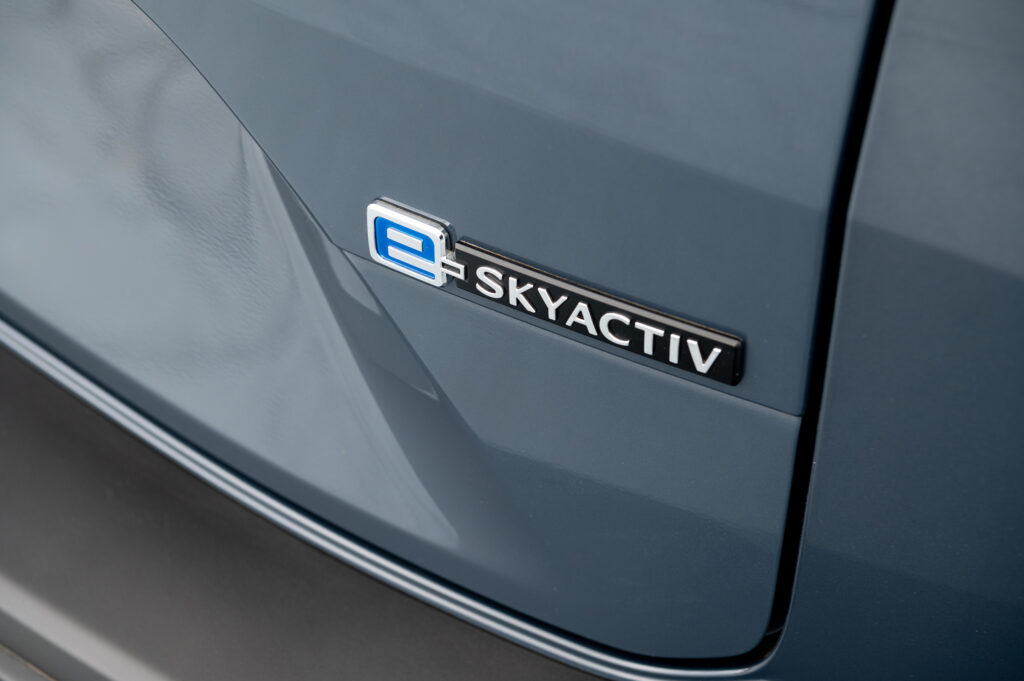
That, in turn, means it uses more electricity when the battery is close to full, mainly because it can’t regenerate electricity until the battery is depleted slightly.
The claimed range is 224km and it quickly became apparent that was not going to happen. The WLTP claim is closer to 200km and that’s appears more realistic.
Either way, after about 20 minutes and about 30 kilometres the battery had dropped from a 98 percent SOC to 82 percent. The forecast remaining range was sitting on 168km. But, again, that included the initial hit when regen wasn’t happening.
Driving the MX-30
There’s a single electric motor under the bonnet and it drives the front wheels.
With 107kW and 271Nm it’s hardly an EV powerhouse, but it delivers more because of the deliciously swift surge of torque.
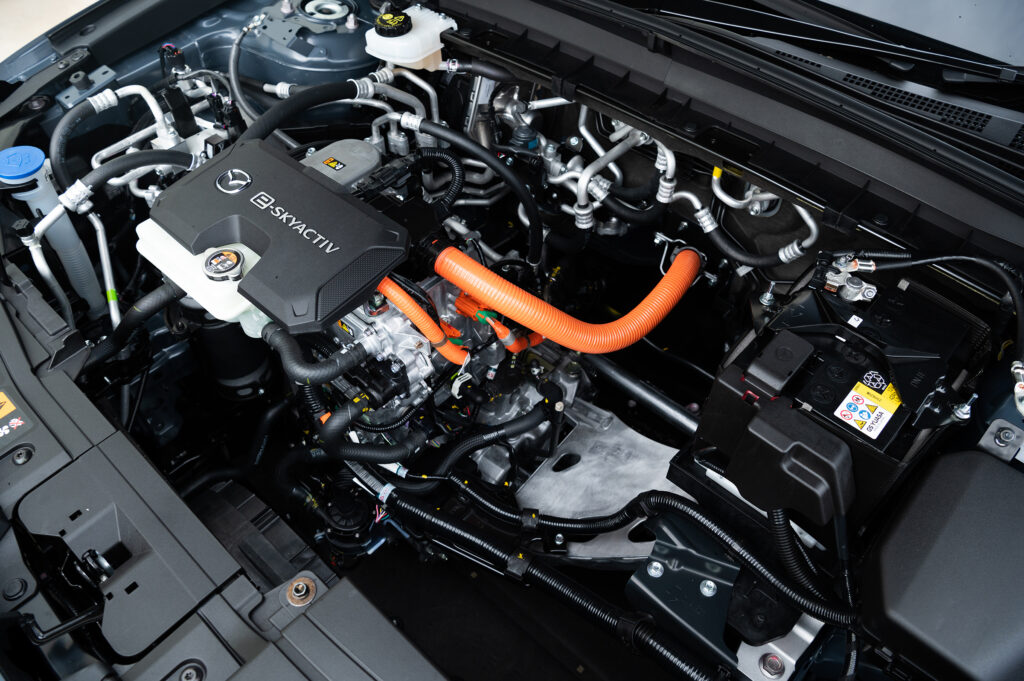
Any prod of the throttle is rewarded with an instant rush of acceleration, the power gauge darting around as the e-motor uses then regenerates electricity.
Winding out of a corner it’s even enough to chirp the inside front wheel, although it’s contained rapidly by swift-acting electronics.
Seamless, too. The MX-30 continues its surge towards triple figures with little fuss, albeit more leisurely as speed increases.
At 1654kg it’s the EV is about 170kg heavier than the MX-30 M-Hybrid model, but there’s still decent pull.
Mazda’s also injected some unique personality into the experience with synthesised sound. The aural accompaniment is like a futuristic engine sound that builds its intensity with speed.
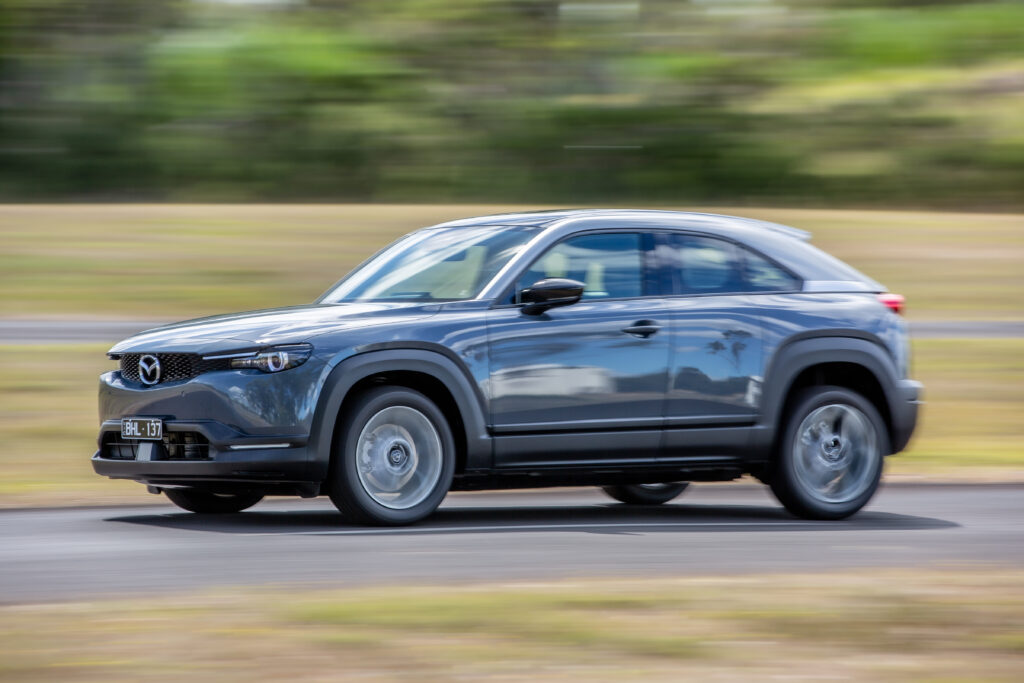
The weight of the EV also makes it a nicer car to drive than the M-Hybrid, which we also sampled.
Having weight down low keeps things nicely contained in corners, the 18-inch Bridgestone tyres the ultimately reaching their limits if you push on, which the car is more than content doing.
Plus, the EV felt marginally more compliant than the mostly-ICE MX-30, as though the suspension more adeptly disposed of bumps while utilising that better body control.
Inside Mazda’s first EV
Mazda’s long focused on the presentation of its interiors and the MX-30 is no different.
But it is different in the layout and some of the materials employed compared with other Mazdas. The mostly digital instrument cluster reinforces that (the outer gauges use analogue needles).
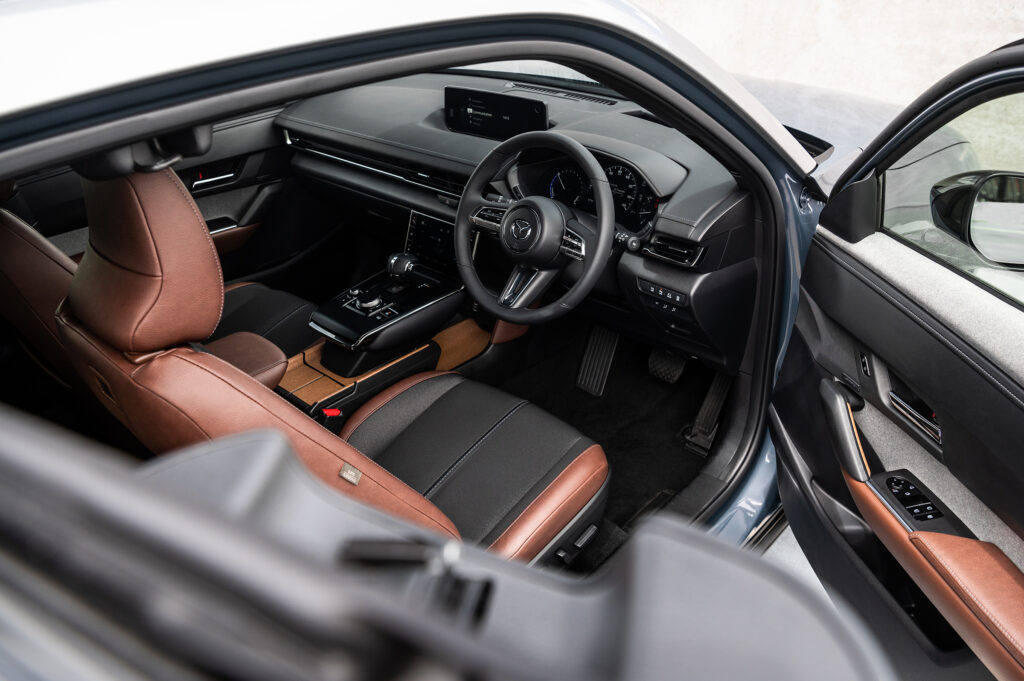
As does the Maztex fake leather seat trim, which blends nicely with a textured material covering the rest of the seats.
The tops of the doors is reminiscent of the recycled material in BMW’s i3 and brings a functional but modern look to parts of the door trim.
Cork finishes hark back to Mazda’s century-old heritage as a cork manufacturer. And before you worry about the cork soaking up drink spills, it has a harder finish to protect against wear and tear.
Metal highlights add to the upmarket cabin.

And there’s plenty of tech throughout, too. Head-up display, Bose audio and a 360-degree camera are the pointy end of a healthy list of trinkets.
The main 8.8-inch infotainment screen is a familiar piece of Mazda kit, although it doesn’t operate as a touchscreen, even when stationary; instead the rotary controller helps you through a logical selection of menus.
Down lower is another digital screen looking after the ventilation.
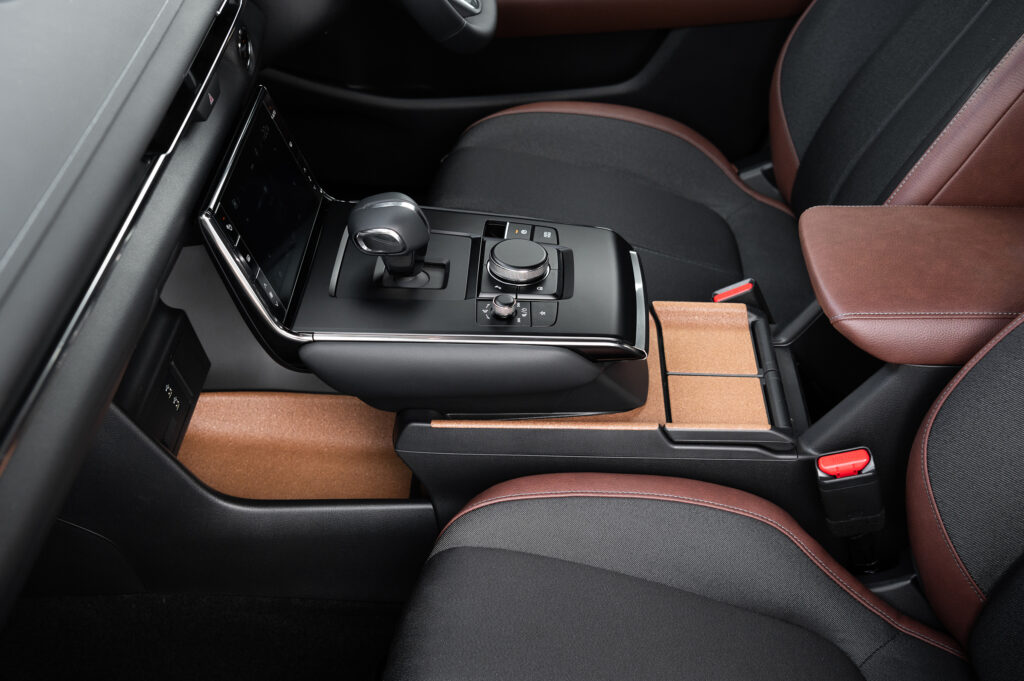
And behind that lower screen and the semi-floating centre console is a sizeable storage area good for small bag, phones and the like.
Opening up
It’s the back doors that in many ways defined the MX-30 – and help justify its MX model designation.
They’re very different to anything else in the mainstream SUV segment, particularly at the more compact end of the scale.
Open the front doors and you have access to the hidden handle to unleash those freestyle doors, which are hinged at the back of the car.
With no central pillar, it opens things right up for a broad view of the front and rear seats.
But those back doors are fairly stubby, so even with that wide open space the more broad-shouldered will have to attack at an angle to access the back seats.
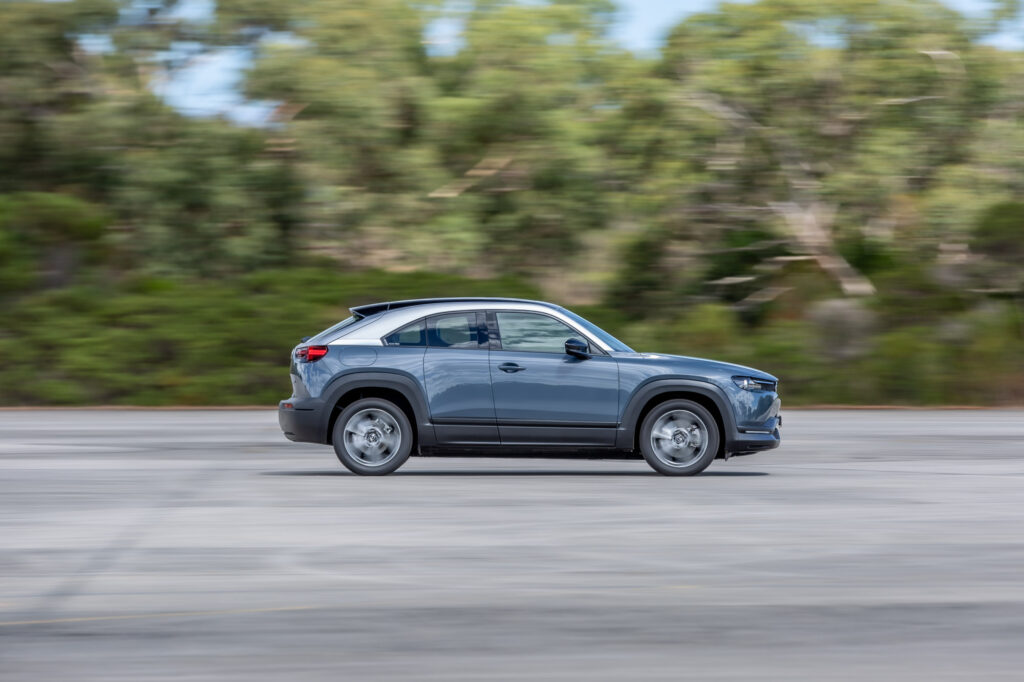
Like the CX-30 it’s so close in size to, rear leg room with depend on the generosity of those up front, while head room is OK.
While they’re well executed, those wanting to regularly use the back seats would do better with the regular doors of the CX-30.
Better than a coupe but not as practical as a regular SUV pretty much sums it up.
So, instead, the MX-30 brings more of the styling and hints of sleekness of a two-door but with a welcome dash of practicality. And some expensive-car theatre when you do open the doors!
Being different works in EV land
Our brief pre-production car drive was enough to reinforce that there’s a likeable freshness to the MX-30.
It’s not as optimised and futuristic as the newer breed of ground-up EVs and its modest battery pack means it won’t travel as far.
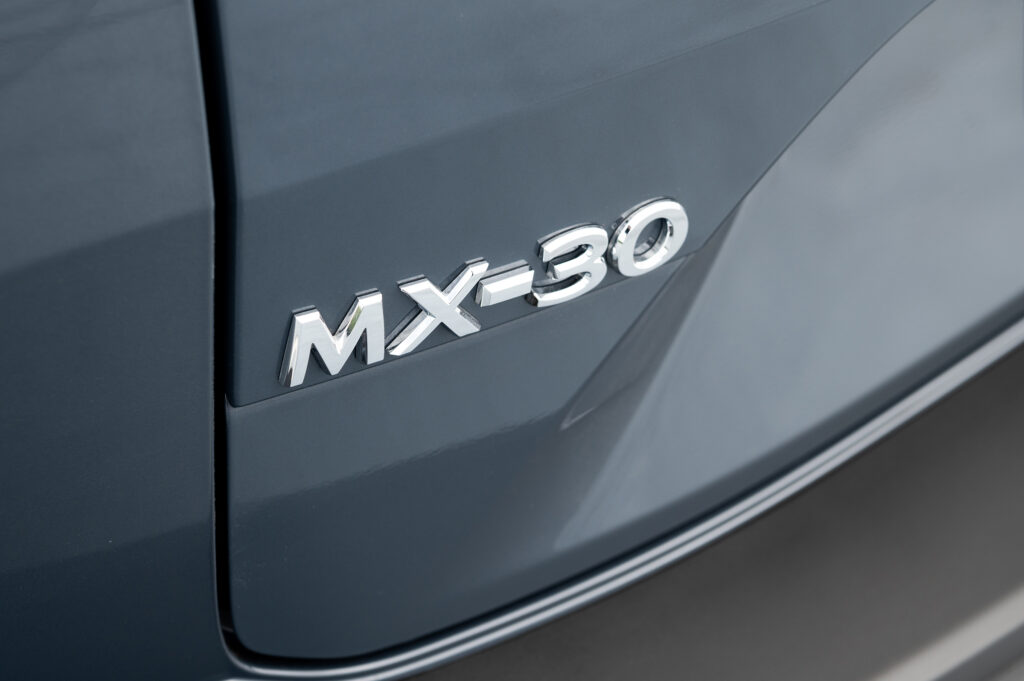
But it stands out visually and has enough fun factor to carve itself a niche in the growing EV space.
Mazda MX-30 Electric specifications
Price: $50,000 (estimated)
Basics: EV, 5 seats, 5 doors, SUV, FWD
Range: 224km (claimed)
Battery capacity: 35.5kWh
Battery warranty: TBA
Energy consumption: TBA
Motors: 1 front 107kW/271Nm
AC charging: 6.6kW, Type 2 plug
DC charging: 50kW, Type 2 CCS combo plug
0-100km/h: NA


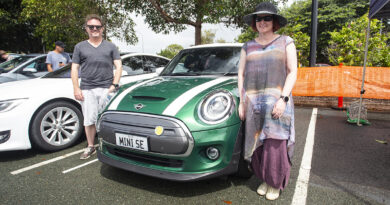
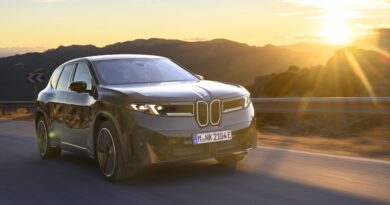
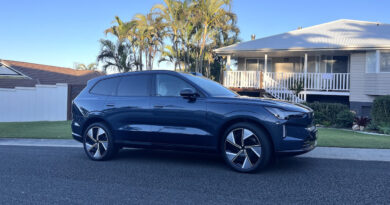
An affordable modest performance “everyday” EV is very welcome. The only way to acheive this is to include a modest battery and motor. Few people will admit this is more than adequate for 98% of their driving, & the old petrol heads will cry “you cant’t take it in holidays”.